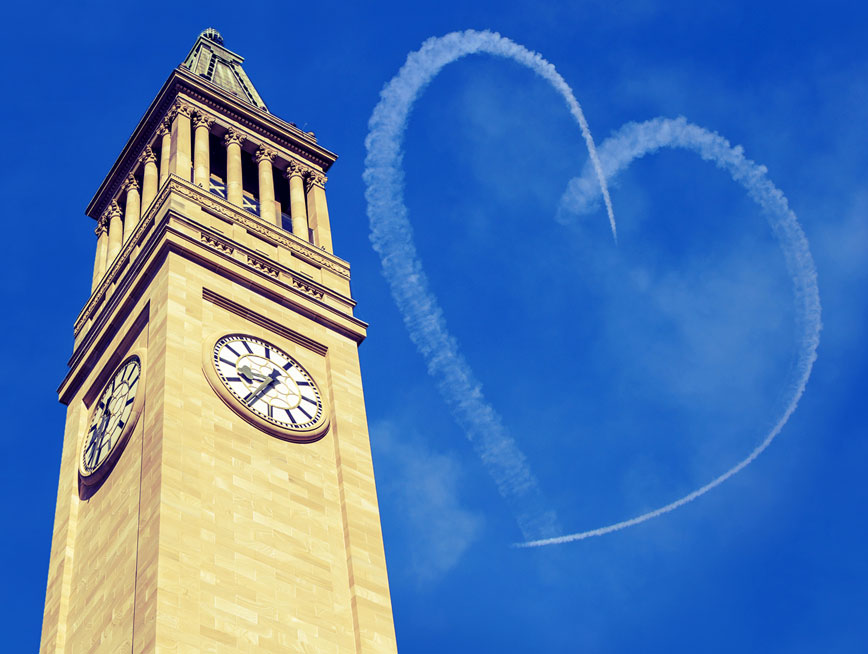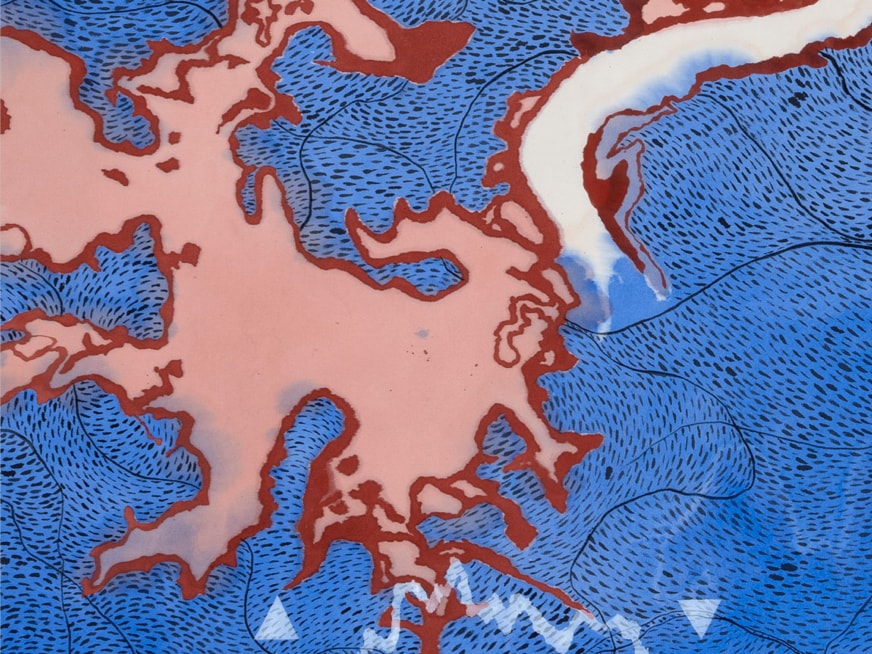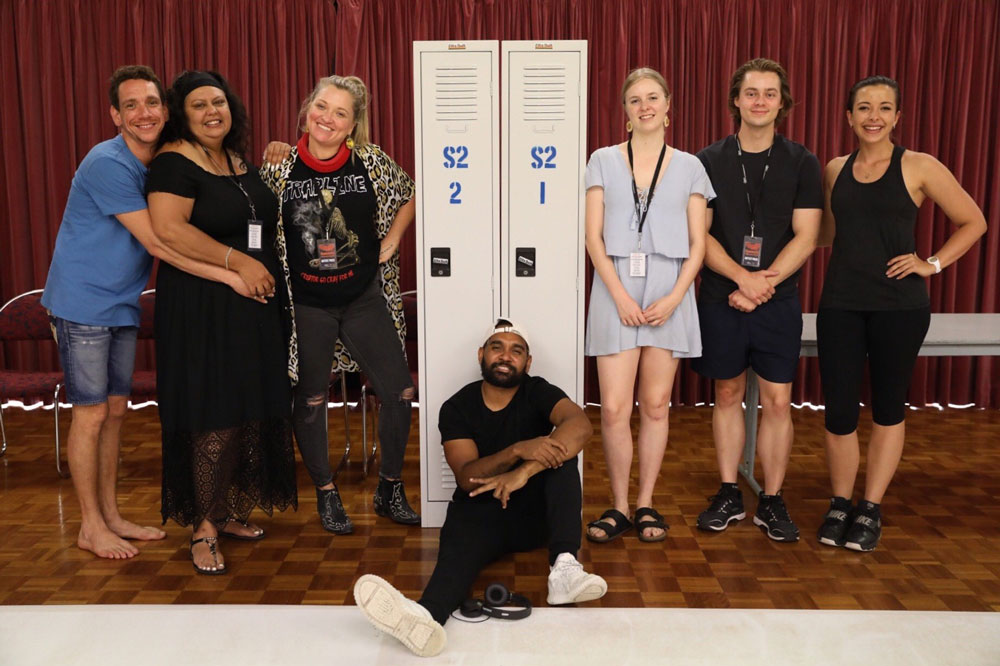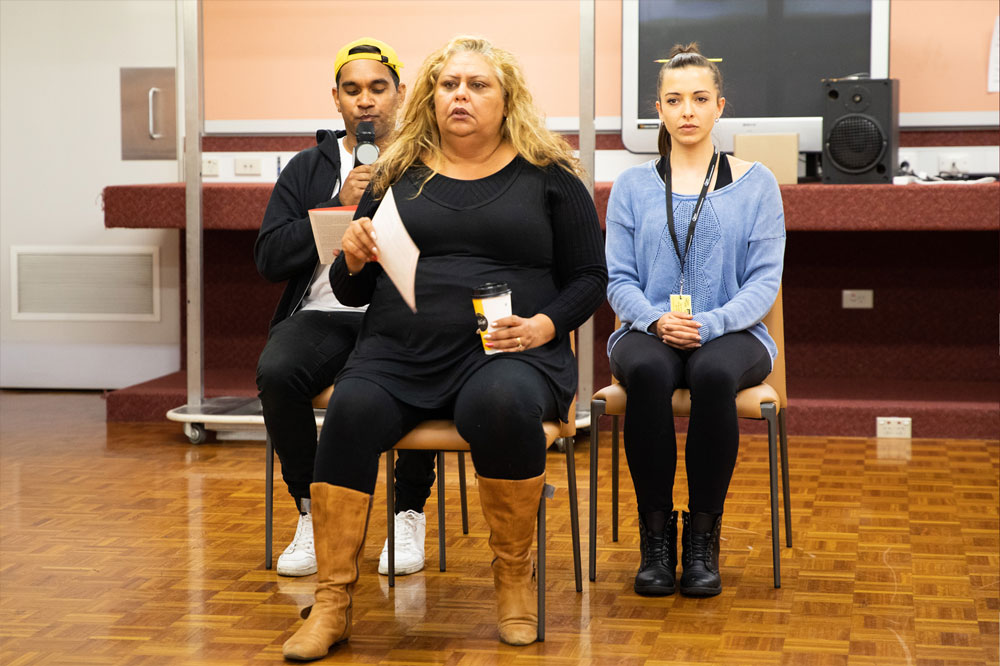Alethea Beetson is a Kabi Kabi/Gubbi Gubbi and Wiradjuri artist and producer. Alethea has worked as the Indigenous Engagement Coordinator at the Queensland Museum, Curator of the Aboriginal and Torres Strait Islander program at Festival 2018 Brisbane, and as First Nations Producer at BIGSOUND and Horizon Festival. She is also the founder of Digi Youth Arts.
Alethea has worked extensively with Indigenous communities across multiple art forms to inspire new works that respond to societal issues, cultural heritage and colonisation. Her research explores the function of ritual, resistance and resurgence in the creative development and production of Indigenous performance.
In 2019, Alethea undertook a residency at Museum of Brisbane where she examined the Museum’s social and art history collections, as well as narratives and issues surrounding absence.
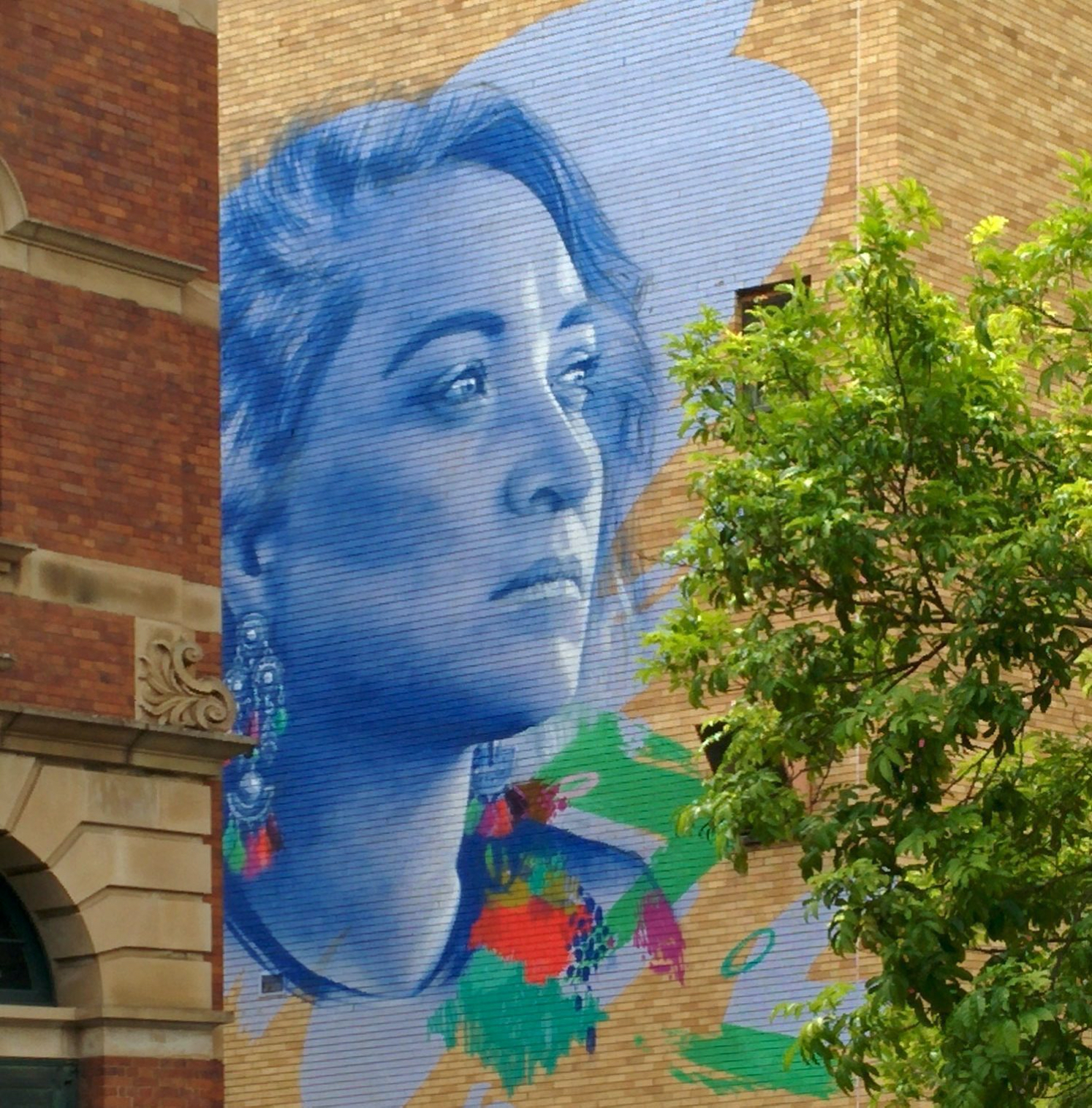
In 2019 you undertook a residency at Museum of Brisbane that involved exploring MoB’s collections and exhibition history. What did you come across in your research?
I have been lucky to spend time going through the parts of Museum of Brisbane collections appropriate for me to navigate since the start of 2019. I have explored the issues and silences within museums in my arts practice before, so examining collections has been a really integral journey for me working on this project. As a theatre maker I found myself less drawn to Museum of Brisbane’s collections, but rather the narratives within this space. Like many social history and art museums, there has been a history of silencing and white-washing Indigenous narratives within the collections, past exhibitions and programs. MoB has been working on addressing these issues for quite some time, which is partly why I am also engaging with this space.
The institution understands the important role Indigenous artists play in changing museum practices, and transforming collections and narratives.
When going through the collection store I came across several images that placed Indigenous people outside the settlement of so-called Brisbane. Images like this are quite common in historical texts, and also our present-day iconography. This depiction of Indigenous people is used to ‘Other’ and erase our presence in urban settings. And although these images still exist, they remind me of the failure of the colonial machine that created them: we are still here, and always will be. The colonial project is very much actively oppressive, and still the cause of societal issues faced by wider communities, but the collective resistance of mob fighting against this system is the energy I want to bring into my work.
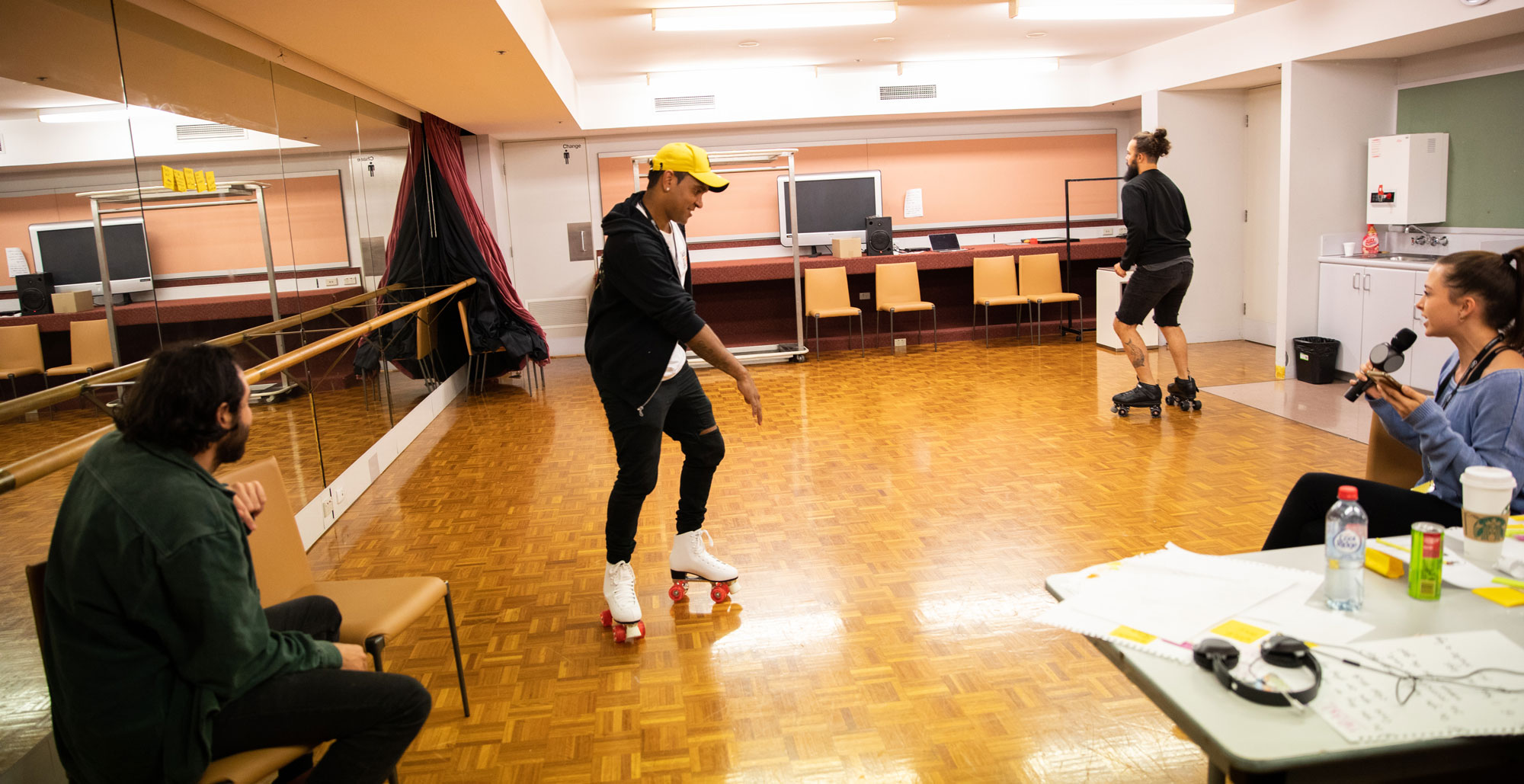
The residency at MoB helped inform your ongoing theatre work Queen’s City. Can you give us an update on this project, and how the residency has contributed to it?
Queen’s City is a new theatre work inspired by the missing narratives, rewritten history and the lack of truth in the story of urban colonisation, as depicted in museum collections and archives. Set in the 1980s at ‘All Ways Karaoke Bar + Skating Rink’ in the fictional place ‘Queen’s City’, the play tells the story of urban colonisation and reclamation. ‘All Ways’ is located in the middle of the city on ‘Restriction Avenue’ and is a rich place of history for blackfellas. Currently one of the major plot devices for the story is the local government calling for ‘All Ways’ to be torn down to make way for a new social history museum in the lead up to ‘Spectacle ‘88’ (yep, a direct reference to Expo ‘88). Which opens up one of the main tensions: whose stories are deemed more important?
The residency has contributed to the work in many ways. The location of Museum of Brisbane at Brisbane City Hall has allowed me to explore the history of that space, and work that into the text. The area was a watering hole, another dimension explored throughout the Queen’s City storyline. It was also the site of the first roller skating rink in Queensland in the late 1800s, so I wanted to use that as the play’s setting.
More significantly, the way I am coming up with the story has derived from museum practices. We know that on this continent white history has been foregrounded, with black history diluted, skewed or not even told. Queen’s City is a retelling of south-east Queensland (post-contact), doing the opposite of what has been done to my community: the black history is true and the white history has been changed. Fictionalising place also allows me to tell the story in a way that can really examine colonialism and reclamation.
One particular Brisbane icon that Queen’s City addresses is the tympanum on top of City Hall, carved by sculptor Daphne Mayo between 1927 and 1930. What is significant about this monument for you?
Part of my research has involved unpacking texts connected to place, like Brisbane: Australia’s New World City (Beanland, 2016) which details the history of Brisbane City Hall. To me the tympanum depicts white saviours in the middle with retreating Indigenous figures on the outside to represent ‘the progress of civilisation in the state of Queensland’, which is also the title of the tympanum. It is a very clear form of erasure that is very much still front and centre (along with other monuments) in so-called Brisbane.
This monument was significant to me and my team of First Nations creatives when we were in creative development in 2019. Given the current phase of the Black Lives Matter revolution and how that has led to the challenging (and toppling) of monuments world-wide, this glorification of colonialism is of even greater significance. My next phase of creative development later this year will examine this tympanum further so that we can work it into Queen’s City.
Do you see a way of either reclaiming or reinterpreting both the content and the prominent placement of the tympanum?
Absolutely! This has been high on my list of things to do during my residency and creative development of Queen’s City since I first started research. At this stage, we plan on reinterpreting the image in the same way as we are constructing Queen’s City: through photography we will remake the image on the tympanum re-centring Indigenous people. The Indigenous characters of the play will take the centre and the non-Indigenous characters will retreat to the side. On top of this, I think there could be some physical activation of this image with actors in King George Square and also some projection work as well. It is early days, so who knows how this will evolve, but we are all keen to reclaim that space.
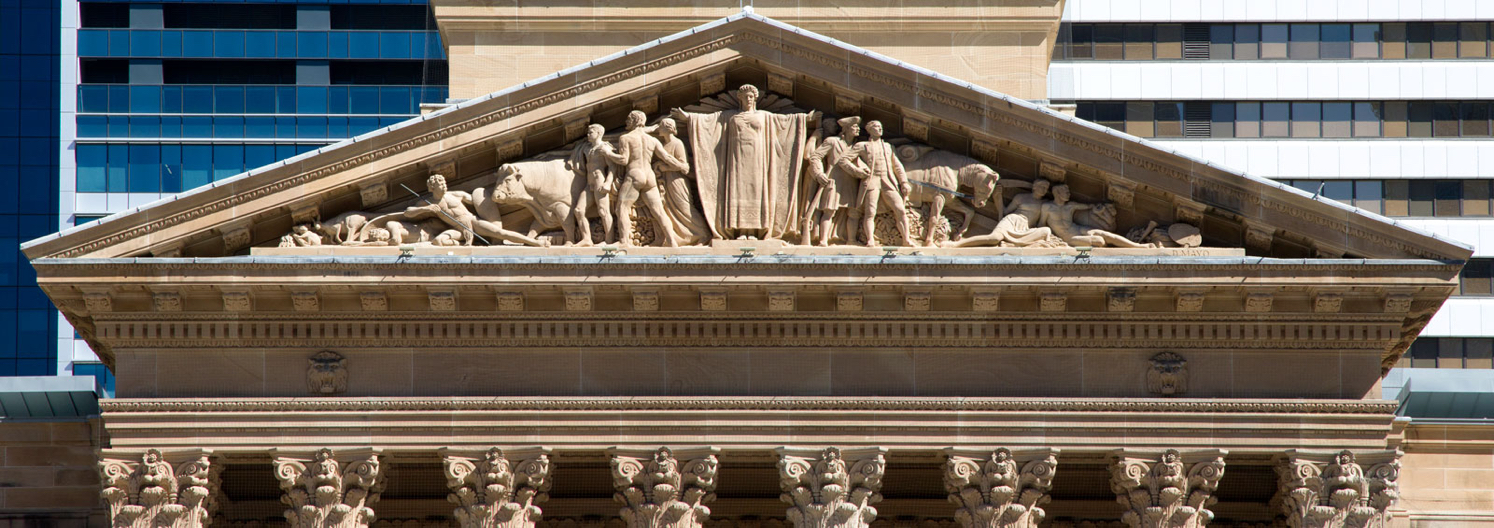
Museum of Brisbane’s Artist in Residence program is supported by Tim Fairfax AC



